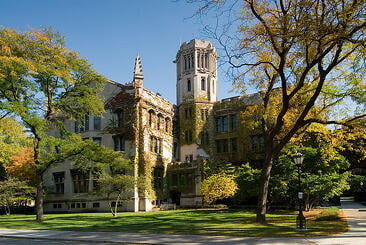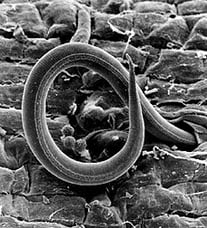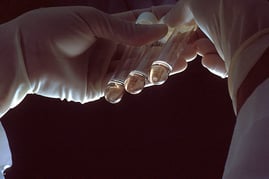The National Institutes of Health (NIH) recently launched a new network of institutions - called the Centers for Common Disease Genomics (CCDG) - which will study common conditions such as heart disease, stroke, diabetes, and autism to see how genetics and DNA contribute to the risk of these diseases. The McDonnell Genome Institute at Washington University in St. Louis is one of four institutions involved in this network and will be receiving $60 million over the next four years to study genomics and common diseases.
Read MoreTags: Washington University St. Louis, Midwest, Missouri, WashU, heart disease, Diabetes, Autism, BioResearch Product Faire Event, MO, St Louis, NIH funding, 2016, Centers for Common Disease Genomics, stroke, CCDG
Stem cell research has been used to grow tumors at the University of Illinois and grow leukemia cells at the University of Wisconsin. Another study from the University of Wisconsin, Madison shows that we can make a special kind of stem cell known as the master heart cell using the most common of mammalian cells.
Read MoreTags: WI, University of Wisconsin Madison, UWisc, BioResearch Product Faire Event, Madison, 2016

There are numerous different types of cancers that affect people around the world. According to the National Cancer Institute, national expenditures for cancer research could exceed $156 billion by 2020, making it one of the most expensive, well-funded research topics around the world. The University of Chicago is one of the many institutions committed to cancer research, with a Comprehensive Cancer Center housing more than 210 researchers and clinicians.
Read MoreTags: Midwest, University of Chicago, cancer research, BioResearch Product Faire Event, Chicago, IL, UChicago, 2016, Hospira Foundation
We’ve seen life science researchers, like Professor Wyman of UC Riverside and Professor Reguera of Michigan State University, master the production of biofuels from biomass sources, such as corn and sugarcane. However, a controversy is brewing around such practices. Critics worry that utilizing these organic materials will substantially detract from the global food supply. Here to answer those concerns is a new study from the University of Minnesota that instead uses agricultural waste as its biomass.
Read MoreTags: University of Minnesota, Minnesota, BioResearch Product Faire Event, UMinn, Twin Cities, 2016
 One in eight couples in the United States has fertility problems. In the majority of infertility cases, the cause can be pinpointed to either the man or the woman, but sometimes there seems to be no explanation for the cause of infertility. Researchers at Rutgers University in New Brunswick, New Jersey studying infertility in roundworms have recently found a link between humans and roundworms that provides insight into human infertility.
One in eight couples in the United States has fertility problems. In the majority of infertility cases, the cause can be pinpointed to either the man or the woman, but sometimes there seems to be no explanation for the cause of infertility. Researchers at Rutgers University in New Brunswick, New Jersey studying infertility in roundworms have recently found a link between humans and roundworms that provides insight into human infertility.
Tags: Northeast, NJ, New Jersey, Rutgers University, BioResearch Product Faire Event, BRPF, Rutgers, Male infertility, 2016, SPE-45, Roundworms, Izumo protein
Bioscientists are constantly discovering new methods to accelerate bone healing. First, we saw them use stem cells to regenerate ribs, and then we saw them add a protein that boosts bone regeneration. Both of these techniques involve introducing new and foreign substances into the body, which run the risk of rejection. A new study from the University of Michigan, Ann Arbor shows that, in fact, cells already at the injury site know how to repair bone if you know how to remind them.
Read MoreTags: University of Michigan Ann Arbor, Ann Arbor, BioResearch Product Faire Event, MI, UMich, 2016

Updated 12/8/2016, originally posted by Laura Braden 2/2/16
Understanding what stem cells do and why they are important has been a popular research topic for many years. Scientists have learned quite a bit about their functions, such as repairing damaged tissues and renewing some normal ones. However, there is no knowledge of where these stem cells originate and how they develop in the embryo.
Read MoreTags: Rockefeller University, Northeast, Stem Cells, New York, RockU, NY, 2016, BioResearch Product Faire

Tuberculosis is the number one cause of death by infectious disease around the world. In 2014, this contagious bacterial infection was responsible for 1.5 million deaths worldwide. Although the disease is treatable and curable, it still persists as a global health problem that scientists continue to study, to develop new and improved treatments.
The Bill & Melinda Gates Foundation recently granted scientists from the Oregon Health and Science University $3 million to research potential vaccines for tuberculosis.
Read MoreTags: The Bill and Melinda Gates Foundation, tuberculosis, Oregon Health and Science University, Northwest, OR, OHSU, Portland, new funding, 2016, BioResearch Product Faire, MAIT cells
For years, we’ve been discussing reasons not to use antibiotics and have seen the development of new alternatives, such as spray-on antibodies and internal bacterial combustion. Despite this, antibiotics continue to be widely used today. Scientists at Washington University in St. Louis theorize that antibiotics are here to stay, but perhaps it is the definition of antibiotics that needs to be changed.
Read MoreTags: Washington University St. Louis, WashU, BioResearch Product Faire Event, MO, St Louis, 2016
 As people get older, their bodies become more susceptible to certain diseases. Cancer, among others, is a disease that becomes more common as people age. David S. Yu, M.D., Ph.D from Emory University was recently awarded $1.6 million from the National Institutes of Health (NIH) to study the gene SIRT2 and how it can be manipulated to control the effects of aging and prevent cancer.
As people get older, their bodies become more susceptible to certain diseases. Cancer, among others, is a disease that becomes more common as people age. David S. Yu, M.D., Ph.D from Emory University was recently awarded $1.6 million from the National Institutes of Health (NIH) to study the gene SIRT2 and how it can be manipulated to control the effects of aging and prevent cancer.
Tags: Emory University, Aging, cancer research, Southern, Emory, Atlanta, GA, 2016, BioResearch Product Faire

